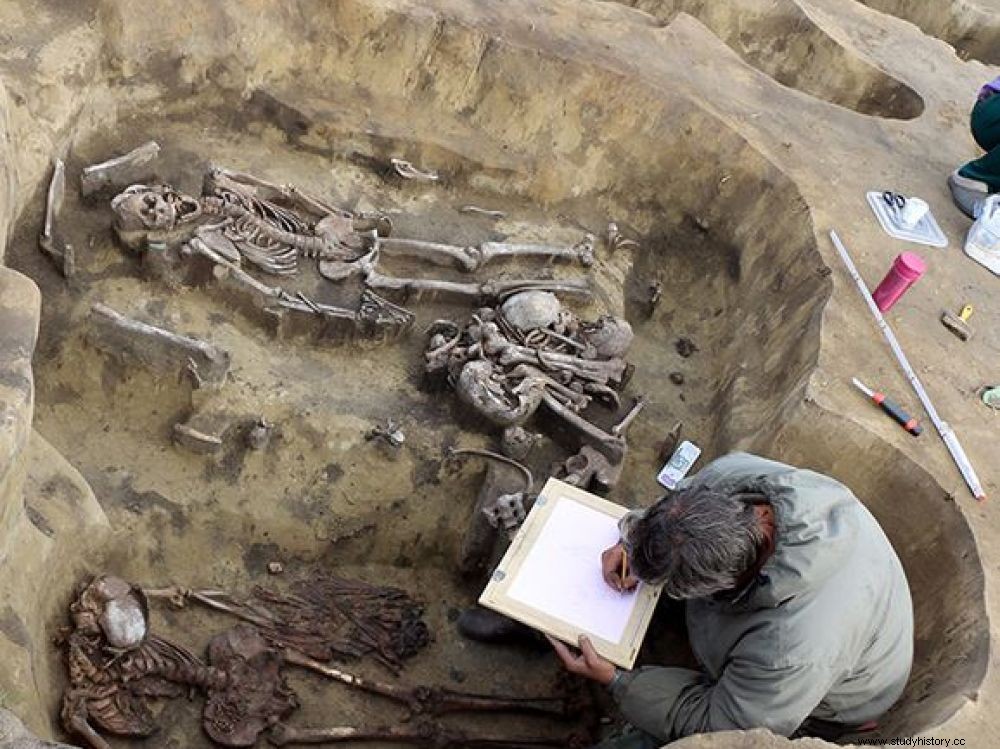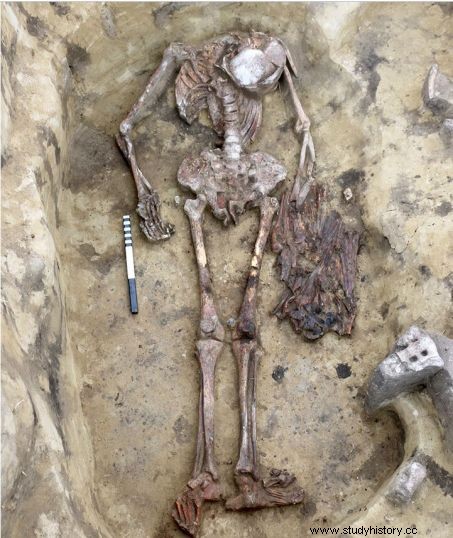Two exceptional tombs dating back around 4500 years have been unearthed on the site of Ust-Tartas II in the Novosibirsk region.

Facing the tomb of the man with the beaks of birds and the one with the children.
It is in the immense Siberian steppe, one of the largest spaces in the world located on the borders of Europe and Asia, that the existence of extraordinary graves exhumed in 2018 was recently revealed by the Russian daily Siberian Times . Two exceptional tombs dating back to around 4,500 years have been unearthed on the site of Ust-Tartas II, a marshy area in the Vengerovsky district, in the Novosibirsk region. Precious remains from an important Bronze Age necropolis, belonging to the Odinovo culture studied by Vyacheslav Molodin, professor at the Russian Academy of Sciences, under whose aegis this work is taking place.
This Eastern Russian society – like many others – is little known to Western scholars and is described as having occupied the basin of the Ishim River in southwestern Siberia. To place it in a historical context, it should be noted that it developed at the time when, for example in Egypt, the pharaoh Mykerinos, son of Kephren, had the last of the three great pyramids erected on the Giza plateau. “Among the thirty graves that we discovered on site and analyzed, we had never found anything so astonishing “, explained to the press Lilya Kobeleva, of the Institute of Archeology and Ethnography of Novosibirsk, responsible for the excavation. One of the remains was indeed adorned with about fifty bird beaks!
 About fifty bird beaks accompanied this deceased. A discovery so far unique in Siberia. ©Novosibirsk Institute of Archeology and Ethnography.
About fifty bird beaks accompanied this deceased. A discovery so far unique in Siberia. ©Novosibirsk Institute of Archeology and Ethnography.
They came in particular from herons and cranes, but ornithologists still have their work cut out to determine all the species possibly present. This assemblage could emanate from a necklace or have been worn as an ornament on a garment. "Could it be the remnants of armor? Of a ritual costume ?” ask the Russian experts.

In the laboratory, when identifying bird beaks. © Novosibirsk Institute of Archeology and Ethnography.
Not far from the "Birdman", as he has since been called, another intriguing burial appeared. That of an adult man near whom lay the bodies of two children aged 5 and 10. But it is a singular object that has caught the attention of researchers. "A strange piece exposed near the skull that turned out to be made of hemispherical bronze blades, almost resembling a pair of glasses" , said Lilya Kobeleva. Could this be the remains of a mask? of a headdress? Fragments of organic matter, possibly bark, were collected nearby.

Another burial with "glasses" in bronze and polished half-moon stones. ©Novosibirsk Institute of Archeology and Ethnography.
The findings did not stop there, however. Near the left arm of the remains and around his waist, five polished stones in the shape of a crescent moon were also arranged. “These pendants are typical of the Bronze Age cultures described in Altai, Khakassia and on the side of Lake Baikal “, specifies Lidia Zotkina, prehistorian of the Institute of Archeology and Ethnography of Novossibirsk, joined by Sciences et Avenir. Who were these two men? What role might they have played within these protohistoric cultures?

Aerial view of the archaeological site of Ust-Tartas II. ©Novosibirsk Institute of Archeology and Ethnography.
Russian scientists believe that they could be distant ancestors of shamans, a name attributed today in Siberia to the intercessors between the world of humans and that of spirits and supernatural forces. Discoveries that open a window on a very old magico-divinatory system still shared by many current communities in the far north.
